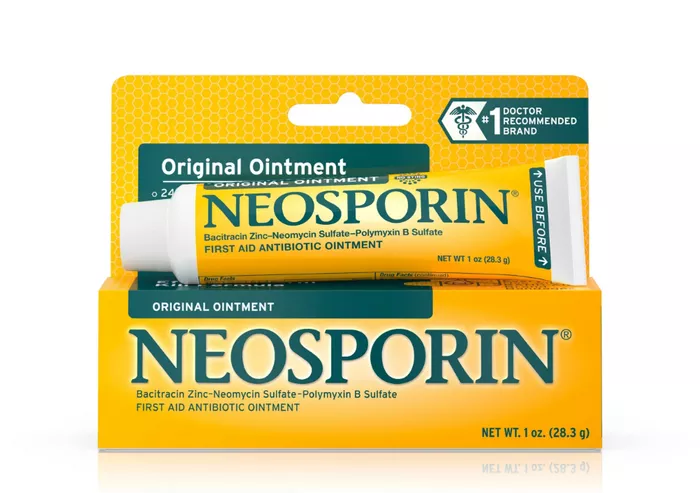Diaper rash is a common condition that affects many infants and toddlers. It often causes discomfort and distress to both the child and the parents. As a result, finding effective treatments is a priority for caregivers. Neosporin, a popular over-the-counter antibiotic ointment, is sometimes considered as a potential remedy for diaper rash. This article aims to explore whether Neosporin is suitable for treating diaper rash, examining its ingredients, potential benefits, risks, and alternative treatments.
What is Diaper Rash?
Diaper rash, medically known as diaper dermatitis, is a form of skin inflammation that occurs in the diaper area. It can manifest as red, inflamed skin, sometimes with bumps or blisters. The primary causes of diaper rash include:
1. Prolonged Exposure to Moisture: Wet diapers can create a damp environment that irritates the skin.
2. Friction: Rubbing from the diaper can lead to chafing and irritation.
3. Irritants: Ingredients in diapers, wipes, and even detergents can cause skin reactions.
4. Infections: Bacterial or yeast infections can complicate diaper rash.
5. Introduction of New Foods: Changes in diet, particularly when introducing solid foods, can affect stool composition and lead to diaper rash.
Understanding Neosporin
Neosporin is a brand-name antibiotic ointment that contains three active ingredients:
1. Neomycin: An antibiotic that fights bacteria on the skin.
2. Polymyxin B: Another antibiotic effective against a variety of bacteria.
3. Bacitracin: An antibiotic that prevents infection in minor cuts, scrapes, and burns.
Neosporin is widely used for treating minor wounds to prevent infection and promote healing. Its antibacterial properties make it effective for treating cuts, scrapes, and burns, which is why some parents consider it for diaper rash.
Can Neosporin Be Used for Diaper Rash?
Assessing the Suitability
1. Benefits:
Antibacterial Properties: If the diaper rash is complicated by a bacterial infection, Neosporin’s antibacterial ingredients can help manage the infection.
Preventing Secondary Infections: Diaper rash can sometimes lead to open sores, which are susceptible to bacterial infections. Neosporin can help prevent these secondary infections.
2. Risks:
Allergic Reactions: Neomycin, one of Neosporin’s ingredients, is a known allergen for some individuals. Using it on delicate baby skin can potentially cause an allergic reaction, worsening the rash.
Not Formulated for Diaper Rash: Neosporin is designed for minor cuts and scrapes, not for conditions like diaper rash. It lacks ingredients specifically meant to soothe and protect irritated skin in the diaper area.
Overuse of Antibiotics: Frequent use of antibiotic ointments can lead to antibiotic resistance, making it harder to treat bacterial infections in the future.
Given these considerations, while Neosporin might help in cases where a bacterial infection is present, it is generally not recommended as the first line of treatment for diaper rash.
Alternative Treatments for Diaper Rash
For most cases of diaper rash, there are more suitable treatments available:
1.Barrier Creams:
Zinc Oxide: Products like Desitin and Boudreaux’s Butt Paste contain zinc oxide, which forms a protective barrier on the skin, helping to heal and prevent further irritation.
Petroleum Jelly: Vaseline creates a moisture barrier, protecting the skin from wetness and friction.
2. Antifungal Creams:
If the diaper rash is caused by a yeast infection, antifungal creams such as those containing clotrimazole (Lotrimin) or miconazole can be effective.
See Also: How to Use Cloth Diapers for Newborns
3. Hydrocortisone Cream:
For severe inflammation, a mild hydrocortisone cream may be recommended by a pediatrician. However, this should be used sparingly and under medical supervision.
4. Frequent Diaper Changes:
Changing diapers frequently to keep the area dry and clean is one of the most effective ways to prevent and treat diaper rash.
5. Gentle Cleansing:
Using plain water or mild, fragrance-free wipes to clean the diaper area can help reduce irritation.
6. Air Time:
Allowing the baby to spend time without a diaper can help the skin to breathe and heal more quickly.
7. Oatmeal Baths:
Adding colloidal oatmeal to the baby’s bath can soothe irritated skin and provide relief from itching and inflammation.
When to See a Doctor
Most diaper rashes can be treated at home with over-the-counter remedies and proper hygiene practices. However, medical attention may be necessary if:
The Rash Persists: If the rash doesn’t improve after a few days of home treatment.
Severe Symptoms: The rash includes blisters, pus-filled sores, or seems extremely painful for the baby.
Fever: The baby develops a fever, which could indicate an infection.
Worsening Condition: The rash spreads to other parts of the body or seems to be getting worse despite treatment.
Conclusion
While Neosporin has its uses for minor cuts and bacterial infections, it is not generally recommended as a primary treatment for diaper rash. The risks, including potential allergic reactions and the inappropriate formulation for diaper rash, outweigh the benefits. Instead, parents and caregivers should focus on proven treatments such as barrier creams, antifungal ointments, and proper diaper hygiene. If in doubt, consulting a healthcare professional is always the best course of action to ensure the health and comfort of the baby.


